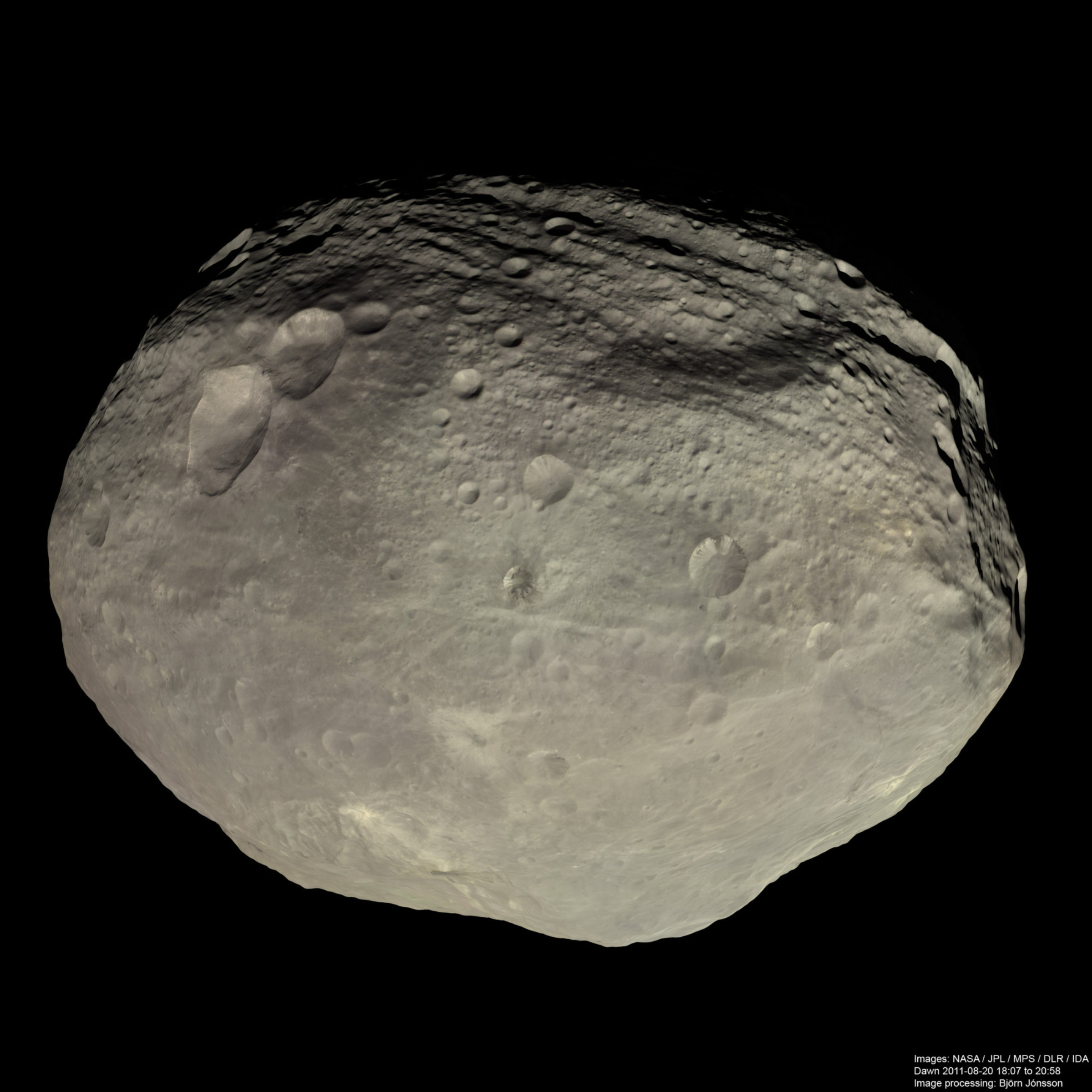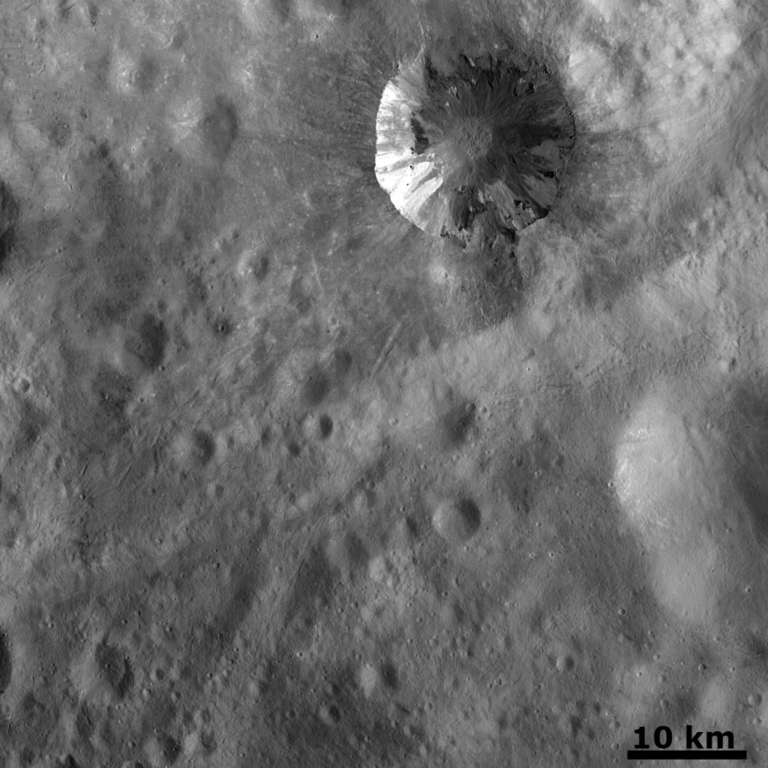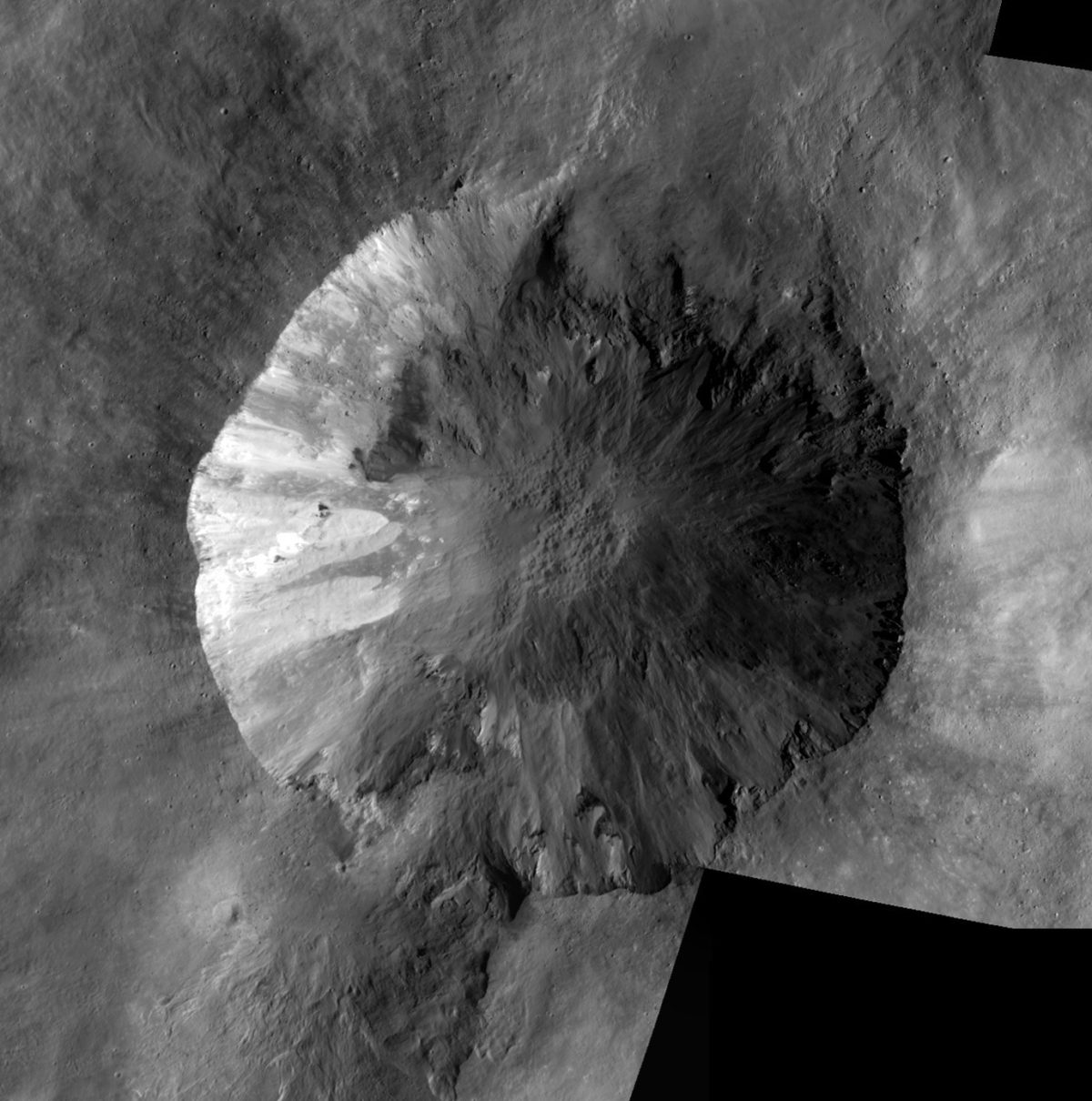Emily Lakdawalla • Mar 21, 2014
LPSC 2014: Water on...Vesta?
On Tuesday afternoon at the Lunar and Planetary Science Conference I spent most of my time in a session titled "Enceladus and Friends." But there was one talk that I had to go check out in another session, in which Jennifer Scully discussed possible water-carved gullies in an unusual location: within craters on Vesta. Water-carved gullies on Mars I can accept; but on an airless lumpy body? I was intrigued.

Scully said she had identified two distinct types of gullies on Vesta in 170 locations. Of these 170, 59 contained gullies. Most of these -- 51 of them -- were linear systems that she suggested were caused by dry flow of granular material -- basically, dust and debris flowing down slope. They are quite straight, not branching or intersecting. She found them both inside and outside craters. These sort of dry avalanches are common on airless and atmosphere-blessed bodies, large and small, across the solar system.
But in a few locations, there was a quite different type of gully: curvilinear systems of interconnected valleys, forming more complex networks. An example of this kind of gully lies within one of my favorite Vestan craters, Cornelia. The photo above has Cornelia roughly at the center. Let's zoom in:

And here it is again, in a high-resolution view that I put together when I played with the Dawn image data browser last fall.

Scully found the curvilinear gullies in only 8 locations. All were inside young craters. Furthermore, they originated in the upper-middle walls of young craters. Where these gullies reach the floors of their craters, they end in lobate deposits, similar to Earth alluvial fans. Often, those deposits have pitted surfaces, as the floor of Cornelia does. Pitted deposits across the solar system usually indicate a place where some solid but volatile substance has turned to a gas and escaped to the vacuum. Hmmmmmmmmm......
So: What could be flowing down the crater wall, forming interconnected valleys, and creating a deposit in the floor of the crater, that then experiences some kind of degassing? One candidate is impact melt -- impacts can generate enough heat to melt the rocky surface of a planetary body. But Scully said that the morphology of both types of gullies just doesn't look like other deposits on Vesta that definitely are impact melts. Scully went through a variety of factors to see if there was anything that could explain or predict which craters would form the straight type of gullies and which would form the curvilinear type of gullies. She couldn't find anything.
So she proposed the following. Assume that there are pockets of subsurface water ice on Vesta. Other work has shown that such pockets of ice could theoretically be stable in Vesta's regolith for billions of years. The Cornelia impact would have energy to spare to melt a subsurface ice pocket.
Scully showed the locations of the eight craters with curvilinear gullies on a map. They clustered tightly in two locations. So maybe those are two locations on Vesta with deposits of subsurface ice for some reason. Because the craters in which they occur are young, there could still be water ice deposits within Vesta. Where would this ice come from? Scully pointed out that we do know that impactors have deposited carbon-rich material on Vesta; but she admitted that there was no correlation between the locations of curvilinear gullies and that material.
I found it an intriguing, though not completely convincing, talk. It's an exciting idea though -- imagine an asteroid collision, and the slow-motion excavation of a crater (slow because of the relatively low gravity), and the impact shock flashing an icy deposit into water, and it springing and tumbling down the slumping wall of the crater mixed with the cascading debris of the crater wall, the surface steaming all the way (because it's in a vacuum), all of this silent (because it's in a vacuum), the debris filling the new crater's floor, still steaming at the top while freezing toward the bottom. Periodically, rarely, a hole appears in the floor, sediment draining downward, as escaping vapor leaves a void behind.
I don't know if it's true, but it's a nice story!
Support our core enterprises
Your support powers our mission to explore worlds, find life, and defend Earth. You make all the difference when you make a gift. Give today!
Donate

 Explore Worlds
Explore Worlds Find Life
Find Life Defend Earth
Defend Earth

